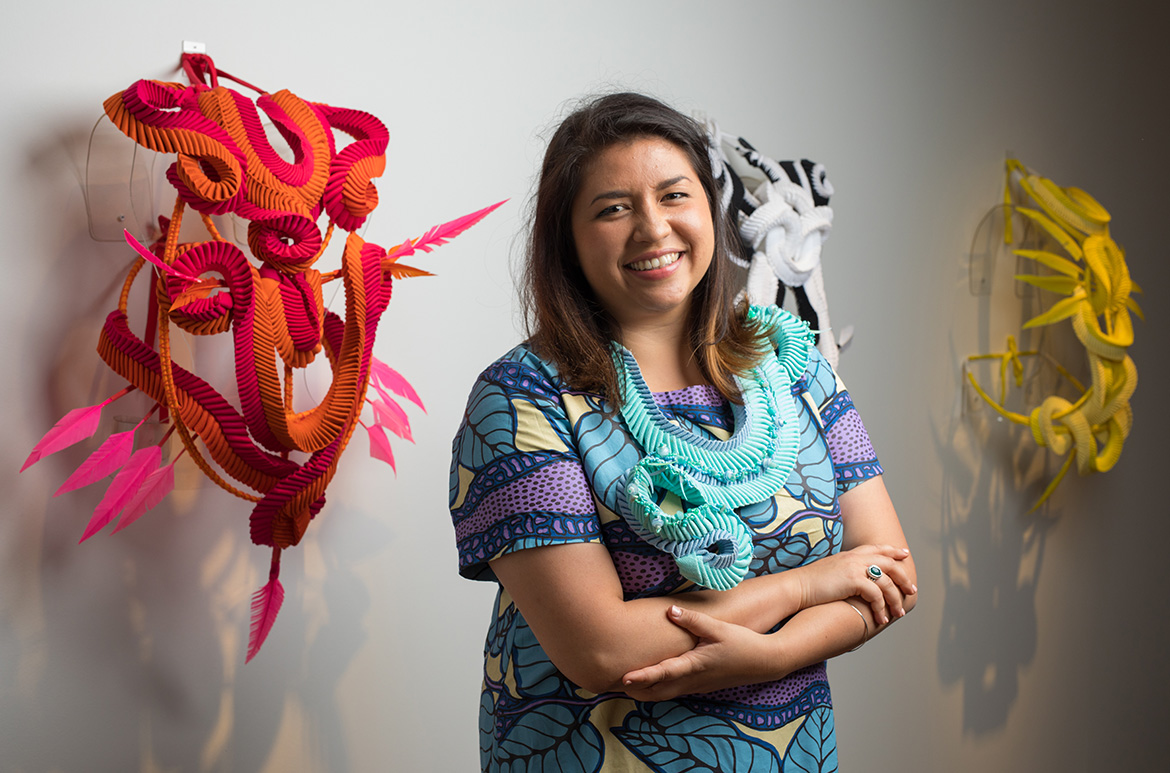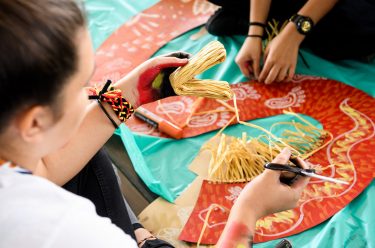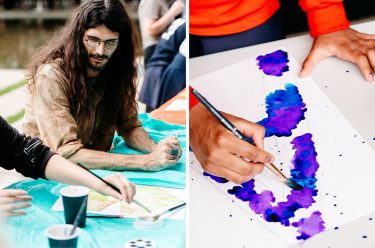QAGOMA’s Open Studio artist is designer, curator, mentor and business owner Grace Lillian Lee. One of five contemporary Australian artists, Lee shares her studio practice and provides insights into how she works.
Open Studio at the Queensland Art Gallery is a home for the creative process. Whether you are looking at artworks selected by each guest artist, sitting down to engage in a drawing tutorial at our drawing stations, watching artist interviews, reading artist books or exploring materials and works in progress on loan from the artist’s studio, you are connecting with the skills and ideas that inform a living creative process.
Lee’s practice combines her Torres Strait Islander heritage with her love of fashion, and takes her creations from the catwalk to the community, writes Bronwyn Mitchell.
Meet Grace Lillian Lee
Grace Lillian Lee
Growing up in Cairns in the 1990s, Grace Lillian Lee says her creative expression was fostered by her parents, and she began making art from a young age. In high school, an annual competition for wearable art gave Lee the opportunity to explore design and art on the body. ‘I really loved creating wearable art and creating the performance that went with the stories I was telling at the time’, she says. ‘I knew I wanted to go on to study fashion design.’
Now in her early thirties, Lee has curated several fashion performances for the Cairns Indigenous Art Fair and runs workshops on country to nurture the creative vision of other young First Nations designers. In 2016, she presented a TEDx talk for James Cook University exploring ‘how the western medium of the catwalk can . . . empower designers and young people from remote locations to share their culture and talent’.1 The same year, Arts Queensland named her one of 16 Queenslanders to watch.2
As a budding young artist, Lee’s first studio was in the laundry of her family home, shortly followed by the dining room. Today she works from her garage, which she renovated with the help of family and friends:
I wanted a place where I feel inspired and creative — it wasn’t, to begin with, but we painted the walls white, polished the concrete floor. My father found some windows from the dump, so he knocked out some holes in the walls so I could have natural light. He also made a large studio table out of recycled pallets, and there are felt walls where I can pin up images, story boards, schedules and budgets.
Lee says she has been wanting to tell stories through wearable adornment, fashion and culture for many years. ‘A huge turning point for me to explore my identity and lineage was in 2010, when I took my grandma back to the Torres Strait. She had not returned for 57 years. This made me want to explore and express myself the best way I knew how, and that was through my creative practice of fashion design.’
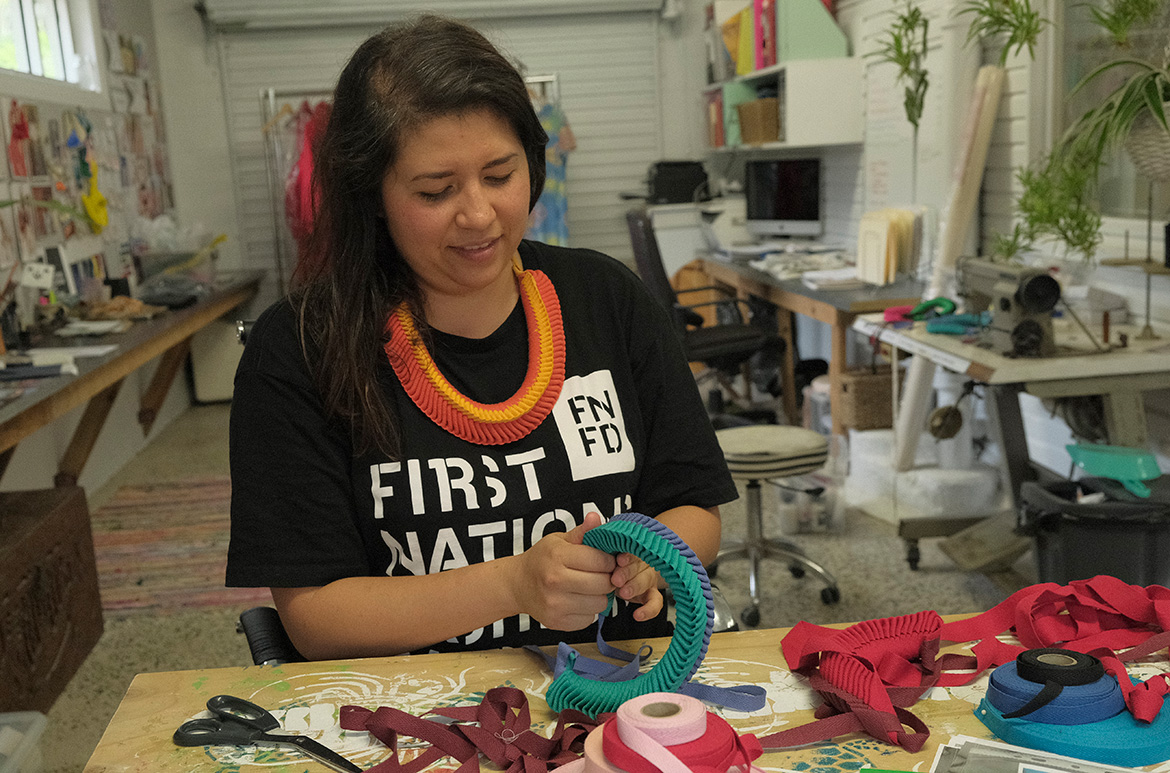
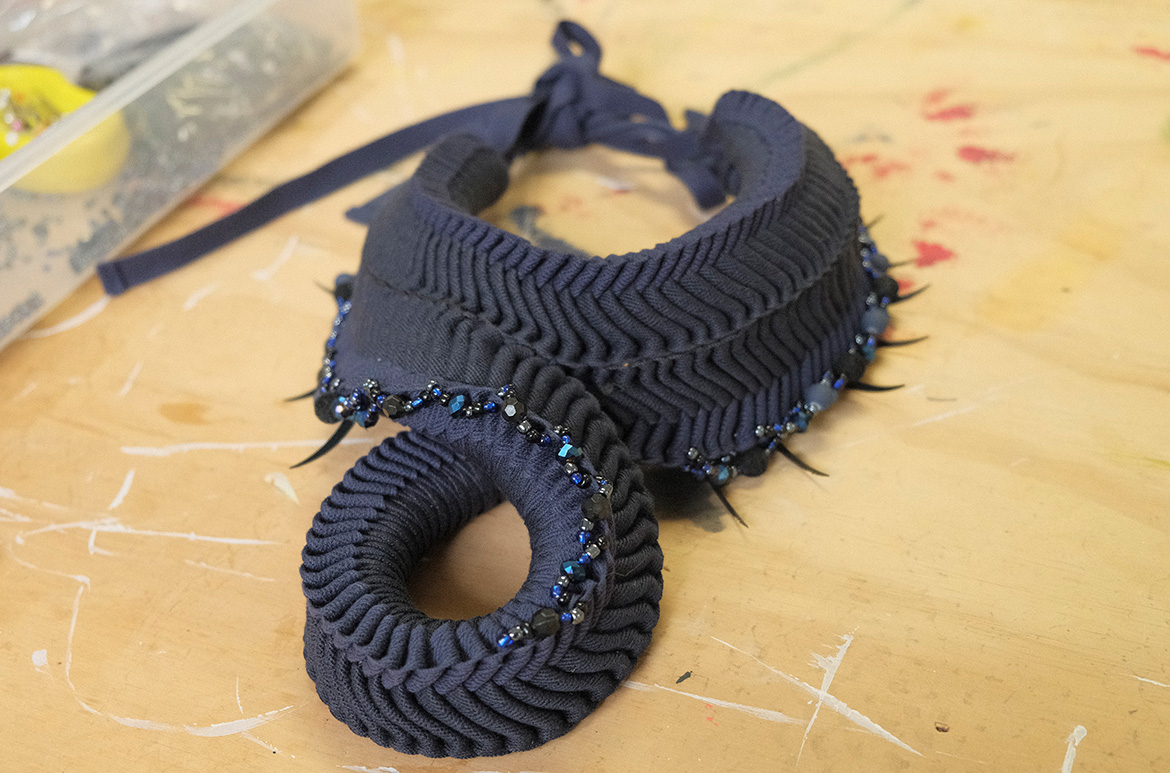
Each Open Studio artist curates their own selection of works from the QAGOMA Collection that are on display in the adjacent artist gallery. Lee has chosen various works that resonate with her own fashion and design practice, including several by other Aboriginal or Torres Strait Islander artists. Erub Island artist Ken Thaiday Snr is known for his remarkable ceremonial headdresses, and frequent visitors to the Gallery list Mirdidingkingathi Juwarnda Sally Gabori’s large-scale, colourful, abstract paintings among their favourite works.
‘My mentor and elder Uncle Ken Thaiday taught me the grasshopper weave, a technique I further developed into my body sculpture works’, Lee says. ‘To have his works displayed alongside my piece, which I created with him, means a lot to me.’ She also worked closely with Gabori’s daughters in the first Aboriginal community she visited for one of her collaborative fashion and design projects. Lee’s collaborative design process evolves out of ‘a lot of yarning, listening and sharing’, she says. She begins by exploring the practice of each artist she works with, whether printbased, ceramics, lino cutting, jewellery making or weaving.
We then play with the idea of telling stories on the body, and that directs and informs the piece. My favourite part is seeing the ideas come alive through either the creator or the models, who are generally family or friends. They embody the stories and dreams of the designer and creator. I believe this activates the piece by being connected and touching the skin — there is a power to this, especially when done out on country. It’s a really deadly feeling.
Asked about the role of fashion and design in preserving culture and connecting communities, Lee says: ‘This is a very big question. This is clearly a space which is growing very fast at the moment, and there is huge interest from the broader Australian community to have access to Indigenous fashion and design.’
The relationship between fashion, design, culture and community is something she has been invited to explore as a PhD candidate, if time ever permits her to accept the offer around all her other activities, such as her work with First Nations Fashion Design (FNFD), an initiative she established to support others in the industry. ‘My aspiration through FNFD is to create a progressive space to support the development of Indigenous fashion and design, to do this in a way that is authentic and safe for the creator.’ Lee also says that she wants to find ways to drive economic development within remote communities ‘to empower and engage our mob to feel excited about the space of fashion and design. I believe fashion and design is the gateway to our young people wanting to [preserve] our culture, [just] as I do through my weaving.’
Bronwyn Mitchell is former Assistant Editor, QAGOMA
Endnotes
1 ‘Culture to Catwalk | Grace Lillian Lee | TEDxJCUCairns’, TEDx Talks, 20 December 2016, <https://youtu.be/vTqVWdZHhC8>, viewed January 2020.
2 ‘16 Queenslanders to watch’, Arts Queensland, 14 January 2016, <https://www.arts.qld.gov.au/news/2016/january/16-queenslandersto-watch>, viewed January 2020.
Indigenous Fashion
Fashion Performance
Gender Politics
The Design Process
Creative Ideas
The Artist Studio
My Place, My Story
My Role, My Journey
Working with the Community
Read about Asia Pacific artists / Know Brisbane through the QAGOMA Collection / Delve into our Queensland Stories or Australian Art highlights / Subscribe to QAGOMA YouTube
The 2020 Open Studio Program is supported by the Copyright Agency’s Cultural Fund
Feature image: Grace Lillian Lee photographed in the Museum of Brisbane’s ‘Dress Code’ exhibition, 2018 / Photograph: David Kelly / Image courtesy: Museum of Brisbane
#QAGOMA
